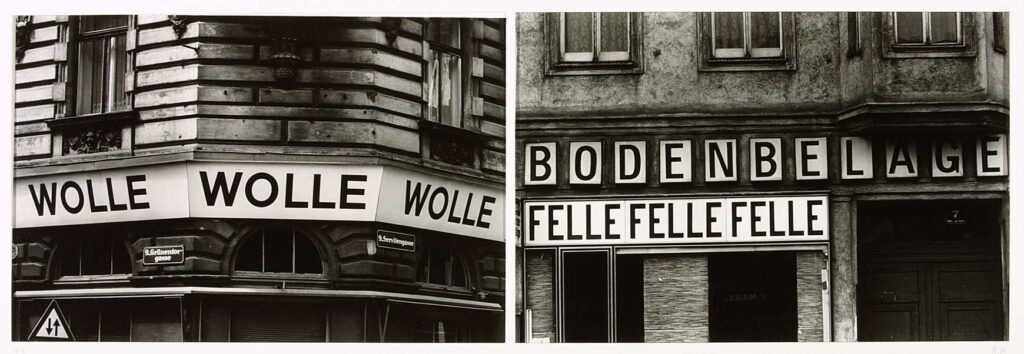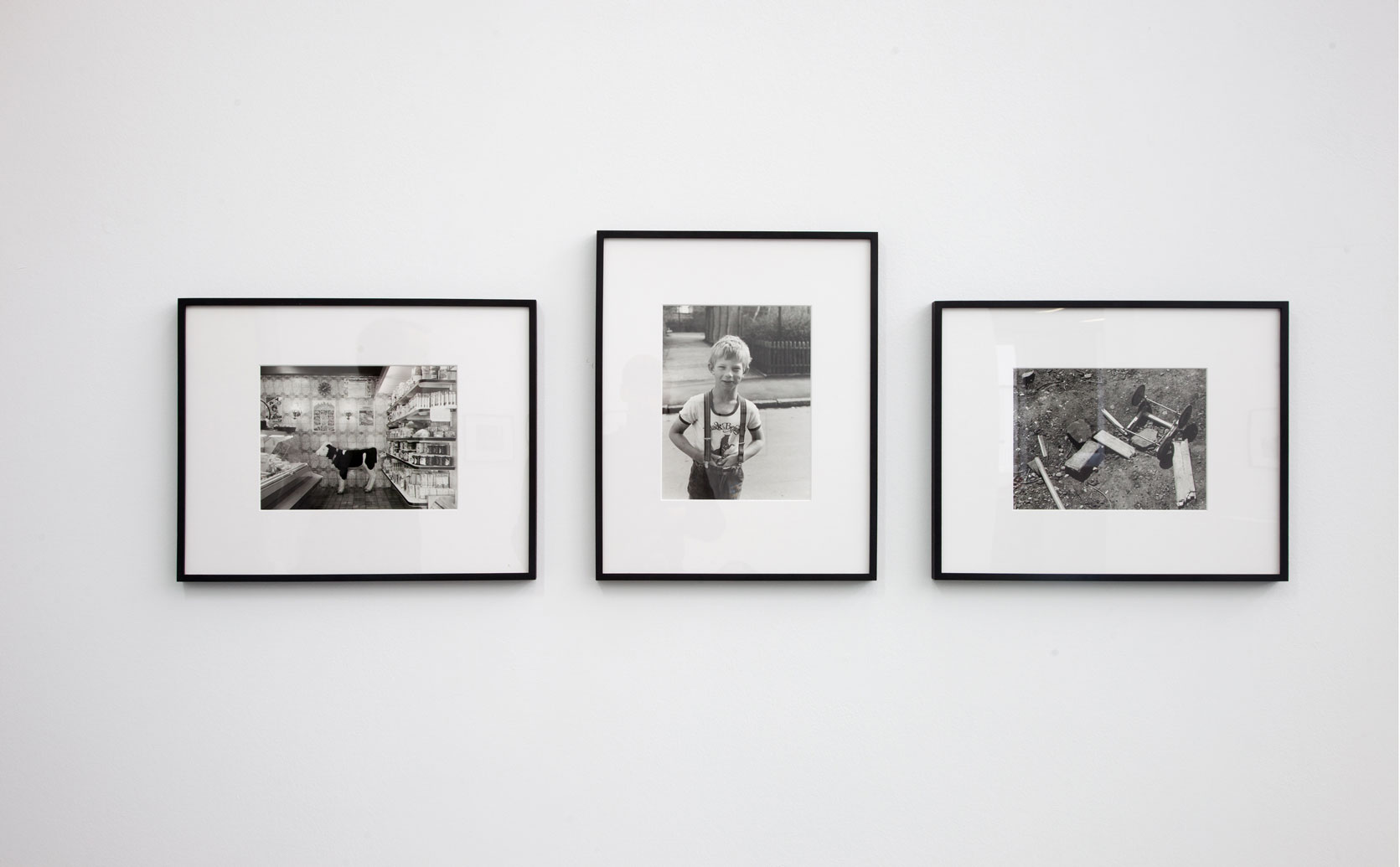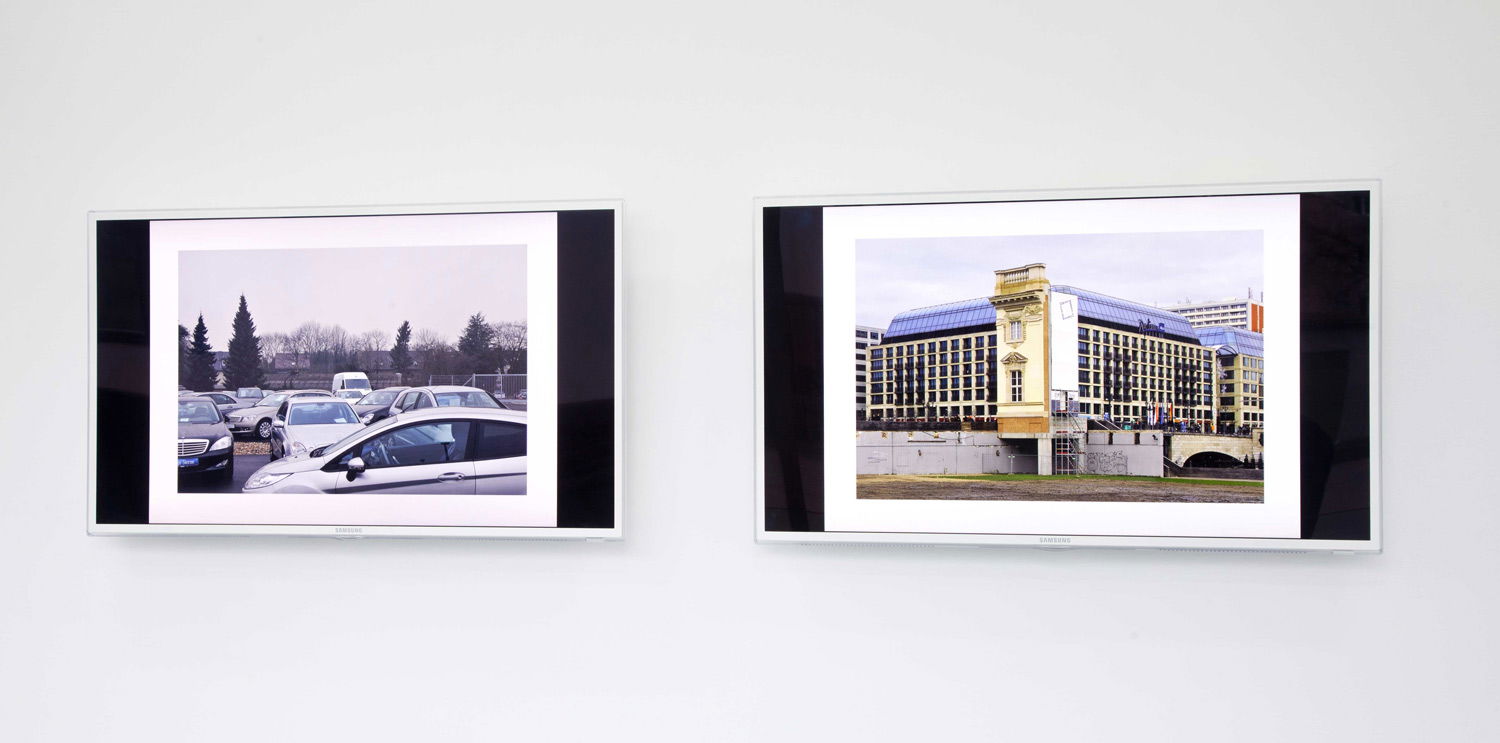Bodo Hell
Stadtschrift
In his book “Stadtschrift“, published in 1983 in the Linz “edition neue texte“, author and photographer Bodo Hell composed a photographic piece using text fragments that have inscribed themselves in Vienna’s fragile architecture. The term Stadtschrift translates literally as “urban writing”, which nowadays we usually associate with the visual sensory overload of large cities, evoking images of Times Square or Piccadilly Circus. By contrast the letterings in shop windows and on the walls of buildings in Vienna which Bodo Hell has chosen to showcase appear quite restrained. Often they consist merely of individual words, but always in close detail and with so little in the way of context that it is almost impossible to draw any conclusions about the nature of the building or even the precise location. There is another expectation thwarted in these images: instead of the multitude of brand names and advertising messages we are accustomed to seeing in urban settings, the words featured are nearly all words that also have a meaning beyond the world of brands and consumerism. The text of each photograph also has a general symbolism or meaning. Even company names such as “Lang or Lose“ go beyond their immediate function. This creates an almost magical world of words; contemplating these images at length one is almost tempted to read a secret message or code into these texts.

Here the text takes centre stage, as befits an author. And it’s the wit and witticism of Alpha and Omega, of “Manna Konserven“ and “Wolle Wolle Wolle“, “Felle Felle Felle“ that immediately catches the viewer’s eye. Bodo Hell allows a certain amount of doubt to linger about the broader picture; but that is also precisely why these Stadtschriften have such an impact as images. These are reduced black-and-white photographs, their written form revealing their time and their history. But even at the time they were shot in the 1980s these writings were already nostalgic, featuring forgotten and therefore enduring signs of a changed world. One is almost reminded of Roman inscriptions, the understanding of which requires a knowledge of history.
Bodo Hell’s true expertise and skill is revealed in these constant shifts between text and image. Urban lettering is a widely used motif in photography. Mostly, it symbolises the density of information that confronts any viewer in a city context; in its proliferation it shows how urban architecture and the cityscape are overlaid and destroyed; and it also shows the abundance of advertising messages to which city dwellers are exposed. These photographers do not usually bother about the content of the texts. And yet, that is precisely Bodo Hell’s starting point as an author, showcasing the texts in the images like precious inscriptions uncovered after a long search. And the words do indeed speak to us, opening up a literary or at least linguistic associative space, slotting almost randomly into the literary oeuvre of Bodo Hell, who time and time again incorporates “found” words and texts into the broad associative space of his texts. It is therefore a literary work with photographic means, a photo series about mining the texts of quotidian life.



